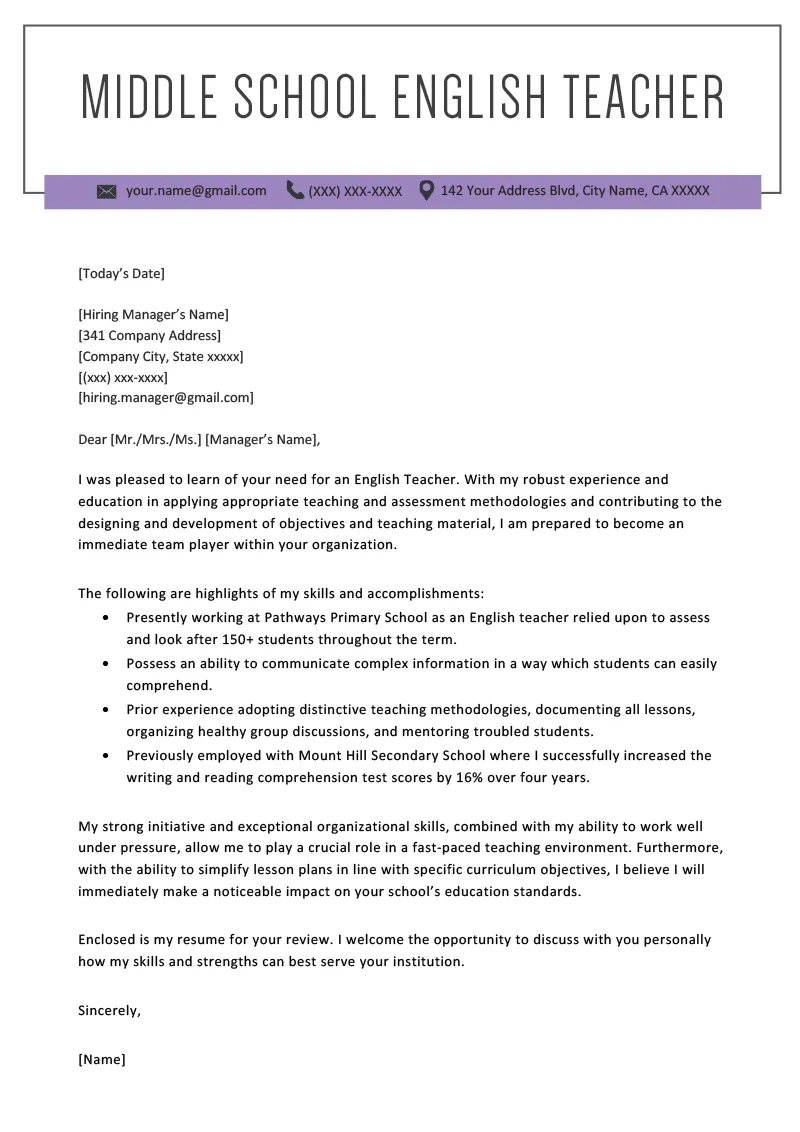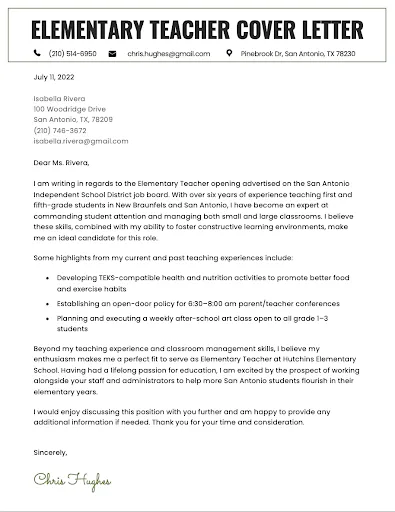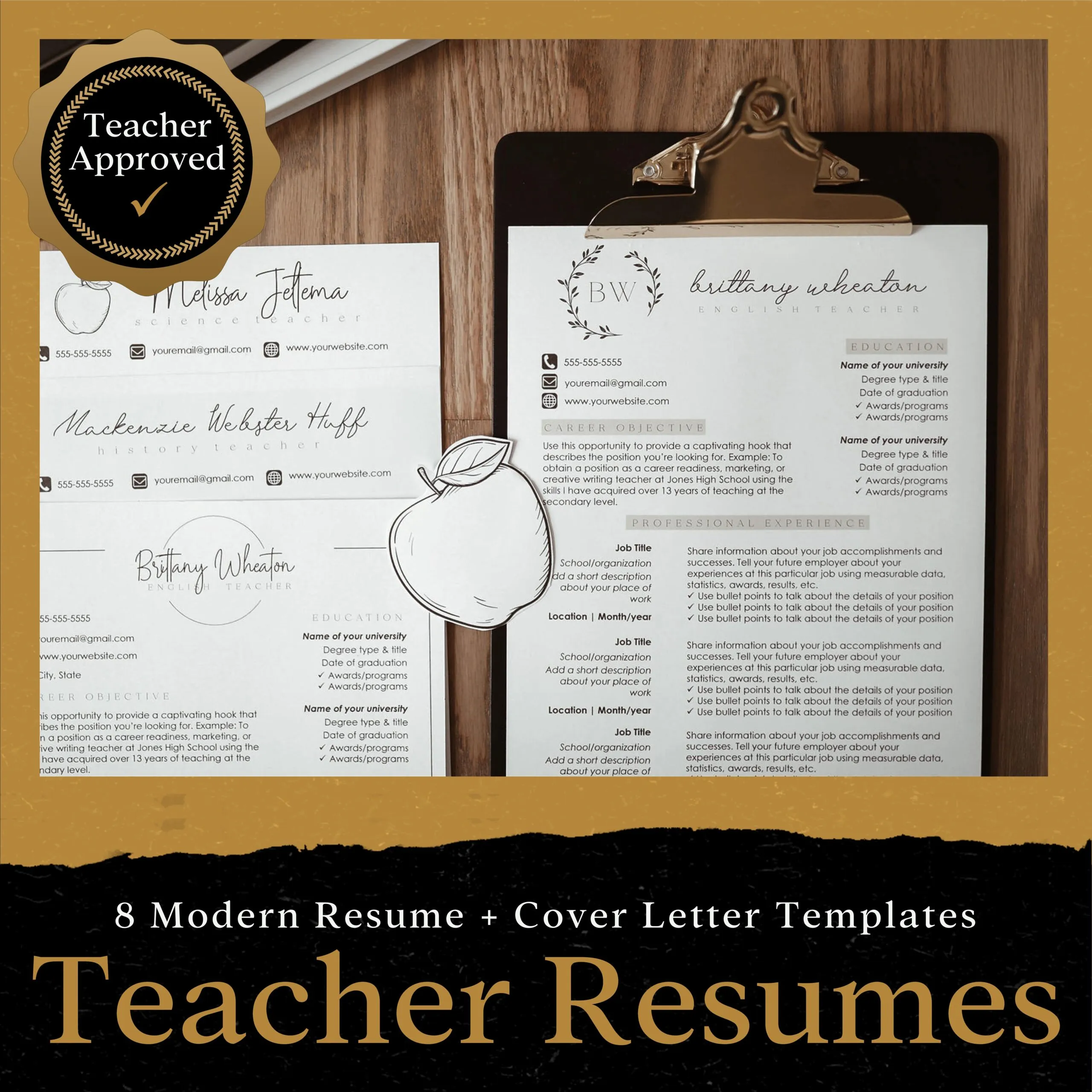Why a Teacher Cover Letter is Crucial
A teacher cover letter serves as your first introduction to a potential employer, often a principal or hiring committee. It’s your opportunity to go beyond the basic information presented in your resume and demonstrate your passion for education, your understanding of the specific school’s needs, and your unique qualifications. Unlike a resume, a cover letter allows you to tell a story, to connect with the reader on a personal level and show them who you are as an educator. Without a compelling cover letter, your resume might get lost in the pile, as it won’t immediately convey your enthusiasm and suitability for the role. Think of it as a chance to make a memorable first impression, showcasing your personality, and articulating why you’re the ideal candidate. The cover letter needs to go beyond the basic details of your work history, showcasing your understanding of the school’s mission, the position’s requirements, and your ability to meet those needs.
Highlighting Your Teaching Experience
When detailing your teaching experience, move beyond listing your job titles and responsibilities. Instead, focus on specific accomplishments and the positive impact you made on students and the school. Quantify your achievements whenever possible. For example, instead of saying, “Improved student test scores,” you could say, “Increased student test scores in mathematics by 15% within one academic year through differentiated instruction and targeted intervention strategies.” Provide concrete examples of how you’ve handled classroom management, curriculum development, and student assessment. Mention specific projects, lesson plans, or initiatives you spearheaded. Showcase any awards, recognition, or positive feedback you received from students, parents, or colleagues. Focus on the most relevant experiences and highlight those that align with the requirements of the teaching position. This will help the hiring manager immediately see how your background fits their needs. A well-crafted description of your experience is vital. Including the school name, dates of employment, and grade levels taught are also essential details.
Showcasing Your Skills and Qualifications

Your cover letter should highlight the skills and qualifications that make you an excellent teacher. Go beyond the basics and emphasize skills that align with the school’s values and the specific needs of the position. This could include skills such as classroom management, curriculum development, differentiated instruction, assessment strategies, and experience with specific technologies or teaching methodologies. If you have experience working with special needs students, English language learners, or diverse student populations, make sure to highlight this. Mention any certifications or specialized training you possess, such as a master’s degree, National Board Certification, or specific subject-area certifications. Consider including any extracurricular activities you’ve led or participated in, such as coaching sports teams, sponsoring clubs, or organizing school events. Align your skills and qualifications with the job description, and provide compelling examples of how you’ve used these skills to benefit students and the school community. The better you can connect your qualifications to the specific needs of the school, the more likely you are to impress the hiring manager. Always include these details to showcase your expertise.
Tailoring Your Letter to the School
Generic cover letters rarely make a strong impression. Customize each letter to the specific school and position you are applying for. Before you begin writing, do your research. Visit the school’s website to learn about its mission, values, and programs. Read any information available about the school’s culture, its approach to education, and the specific needs of the position. Address the letter to the hiring manager by name. If possible, find out who will be reviewing the applications and use their name in your greeting. In the body of the letter, explicitly mention why you’re interested in that particular school and how your skills and experience align with its specific needs. Reference any specific programs, initiatives, or values that resonate with you. Show that you understand the school’s priorities and are prepared to contribute to its success. Highlighting a unique connection you have to the school will immediately put you at an advantage. Demonstrate that your choice to apply to this school is more than just a job search – it’s a deliberate decision.
Formatting Your Teacher Cover Letter
The format of your cover letter is important. A well-formatted letter is easy to read and professional-looking. Use a standard business letter format with a clear and concise layout. Use a readable font like Times New Roman, Arial, or Calibri, and use a font size of 11 or 12 points. Include your contact information at the top of the letter, including your name, address, phone number, and email address. Use a professional salutation, such as “Dear Mr. / Ms. [Last Name].” Keep the letter concise, ideally no more than one page. Use a clear and logical structure with an introduction, body paragraphs, and a conclusion. The introduction should state the position you are applying for and where you saw the job posting. The body paragraphs should highlight your relevant experience, skills, and qualifications. The conclusion should summarize your interest in the position and reiterate your desire for an interview. End the letter with a professional closing, such as “Sincerely” or “Respectfully,” followed by your typed name. Always proofread for errors and ensure your formatting is consistent throughout the document, and the file format should be PDF.
Proofreading and Editing Your Cover Letter

Carefully proofread and edit your cover letter before submitting it. Errors in spelling, grammar, or punctuation can create a negative impression and undermine your credibility. Take the time to review your letter multiple times. Use a spell checker and grammar checker, but don’t rely on them entirely. Read your letter aloud to catch any awkward phrasing or typos. Ask a friend, family member, or career counselor to review your letter and provide feedback. They can identify any areas that need improvement or offer suggestions for strengthening your writing. Make sure the tone of the letter is professional and enthusiastic. Avoid slang, jargon, or overly casual language. Tailor the letter to the specific school and position, and ensure that it complements your resume. Check that all your contact information is accurate. Double-check the name and title of the hiring manager, and verify the school’s address. Proofreading is an essential part of the writing process. Errors can be easily missed, so be diligent. Consider this the last opportunity to create a positive first impression with your application.
In conclusion, a well-crafted teacher cover letter is a critical component of any successful job application. By highlighting your experience, showcasing your skills, tailoring the letter to the school, formatting it professionally, and proofreading carefully, you can significantly increase your chances of getting hired. Remember to focus on your achievements, demonstrate your passion for teaching, and express your understanding of the school’s needs. Good luck with your job search!
